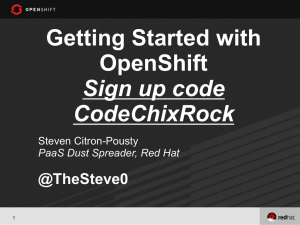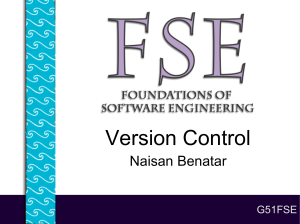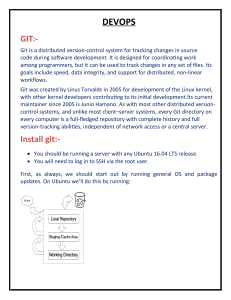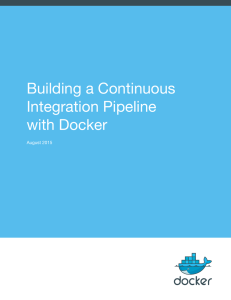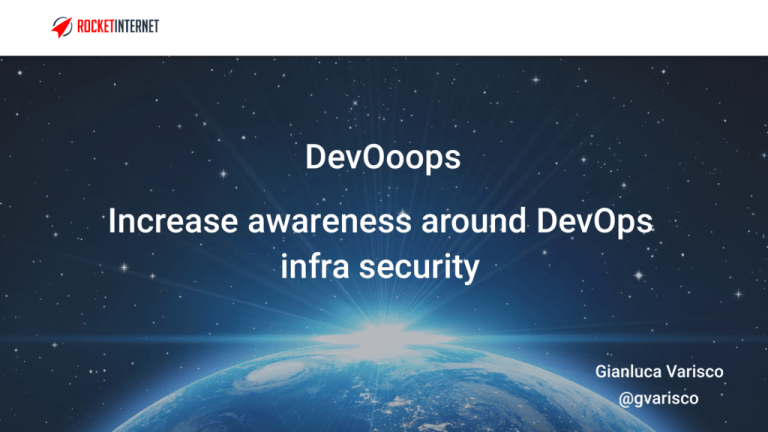
DevOoops
Increase awareness around DevOps
infra security
Gianluca Varisco
@gvarisco
$ whoami
VP Security @ Rocket Internet SE
Formerly at Red Hat, Lastminute.com Group, PrivateWave
What is DevOps?
DevOps is about creating a conveyor belt to systematically pull
together all of the pieces that need to go into production using
automation to create a safe and reliable application deployment.
Why Security needs DevOps
How vulnerabilities get introduced
Configuration errors
Human mistake
(bad OPSEC)
Missing patch
Coding mistake
alias devops=sudo
We learned (the HARD WAY) that DevOps is more than
giving root to developers….
DevOps Borat
Agenda
01
GitHub
02
RCS tools
03
CI tools
04
AWS config files
05
Client provisioning tools
06
Elasticsearch
07
In-memory databases
08
Docker
GitHub
GitHub - Search
It does support “advanced” search operators, eg.
• extension:conf ftp server configuration
• extension:pem private
• extension:xls mail
• extension:sql mysql dump
• extension:php “preg_replace(“/(.+)/e” (RCE)
• OSINT (within companies’ and employees’ repos)
GitHub – Impersonating others
Pushing code to GitHub as Linus Torvalds?
People trust
pictures!
GitHub – Impersonating others / 2
• Hey, look! Linus is the main committer of my
github.com:gvarisco/swag.git repo!
• Sad truth! Design flaw or targeted feature? Official
response below..
GitHub – Learnings / TODOs
• Always audit who has access to your repos
• Be suspicious of pull requests with other authors’ code within
the PR.
• Always delete a private fork of a private organization
repository if a member leaves your organization.
• Audit organization members for 2-step verification
RCS Tools
.git exposure
Does your website expose the .git/ folder on a webserver
out there?
▪ Access to such content lets you download the full
source code
▪ tl;dr: NO, Turning DirectoryIndex (Apache) /
autoindex (nginx) ON/OFF is NOT the fix!
.git exposure / What can you get?
• Source code, config files, credentials, developer names,
public/private keys, SSL certificates, e-mail addresses,
etc.
• Repo HISTORY (security issues fixed, password wrongly
committed and removed later)
• Archives / backups {My,Postgre,XYZ}SQL dumps
• Session generation keys
.git exposure / DirectoryIndex ON
• $ mkdir website-source-code
• $ cd website-source-code
• $ wget –mirror –include-directories=/.git http://
www.example.com/.git
• $ cd www.example.com
• $ git reset –hard
HEAD is now at […]
.git exposure / DirectoryIndex OFF
• Git-fsck to the rescue!
• Bruteforce: Predictable file names and known object
hashes, etc.
• DVCS-{Pillage,Ripper} do it for you
• Many admins tend to answer either 403 or 404 for .git/
but .git/config works just fine.
• Git stores file information within the objects folder.
Abusing the .git/ Objects folder
• See the SHA-1 for index.php:
• $ git cat-file –p master^{tree}
• Take the SHA-1 and give it to ‘git cat-file’ to print out the
file contents:
Subversion 1.6.x
• 1.6.x and earlier
• Check for .entries files
• Walk SVN chain to retrieve all files. Metasploit does
it for you (auxiliary/scanner/http/svn_scanner)
Subversion 1.7.x
• 1.7.x uses SQLite.
• Metasploit’s auxiliary/scanner/http/
svn_wcdb_scanner to the rescue! It will retrieve
SVN’s wc.db for you
• As we know the file name and the SHA-1 used,
we can map all files.
Subversion 1.7.x
$ sqlite3 wc.db 'select local_relpath, ".svn/pristine/" || substr(checksum,7,2) || "/" ||
substr(checksum,7) || ".svn-base" as alpha from NODES;’
index.php|.svn/pristine/4e/4e6a225331f9ae872db25a8f85ae7be05cea6d51.svn-base
style/style.js|.svn/pristine/2s/2cc5590e0ba024c3db77a13896da09b39ea74799.svnbase
...
$ wget -O - http://www.example.com/.svn/pristine/4e/
4e6a225331f9ae872db25a8f85ae7be05cea6d51.svn-base
<?php
CI Tools
Jenkins
• The leading open-source continuous
integration server.
• Built in Java, it provides 985 plug-ins to support building and testing virtually any project.
• Latest and greatest release: 1.635
• A “few” security advisories…
Jenkins – Searches on Shodan
Abusing Jenkins
• Metasploit modules:
• auxiliary/scanner/http/jenkins_enum
(It enumerates a remote Jenkins installation in an
unauthenticated manner, including host OS and Jenkins
installation details)
• exploit/multi/http/jenkins_script_console
(It uses the Jenkins Groovy script console to execute OS
commands using Java.)
•
If no authentication is required, it is trivial to gain remote code execution
via script console.
Abusing Jenkins – Script console
Wanna display jenkins’ user private SSH key? No problem! It is as
simple as executing:
•
println new ProcessBuilder('sh','-c','cat /Users/batman/.ssh/
id_rsa').redirectErrorStream(true).start().text
Abusing Jenkins
• Last, but not least:
• If you have access to /view/All/newJob, create new
builds and run commands.
• Browse WORKSPACEs, read config / folders
containing sensitive data, eg. credentials, API keys
AWS config files
AWS config files
•
ALL credentials are stored in plain-text in “”hidden files””, eg.
/home/gvarisco/.foo/bar
•
Typically privileged accesses
•
Once credentials are found, any of the OSS libraries available out
there can interact with AWS (eg. Nimbostratus, AWS CLI tools)
•
OSINT / Information leakage via GitHub, Pastebins, etc.
Provisioning tools
Puppet
•
If you expose a dashboard (eg. PuppetBoard/PuppetDB) be careful
with your custom FACTS
•
Encrypt your sensitive YAML files’ information (if you use HIERA, a
key/value lookup tool for config data) with HIERA-EYAML
•
•
It does provide asymmetric encryption of sensitive data
Store the keys securely when using puppet, as only the
puppetmaster needs access to them in order to perform
decryption when the agent runs on a remote node
Puppet – Hiera-EYAML
Chef
• Web Interface (Chef Server), Rails powered, uses admin /
p@ssw0rd1 as default credentials
Chef
• Databags items (eg. MySQL data) can be encrypted
• Use knife – a cli tool that provides an interface between a
local chef-repo and the Chef server
Vagrant
• Did you change your SSH keys?
• Vagrant 1.7+ embeds vagrant-rekey-ssh plug-in
Vagrant
• Common user/passwords: root/vagrant OR vagrant/vagrant
• NO pass to sudo ☹
Vagrant – Scans using the default private key
Vagrant – breaking in!
• Vagrant workflows encourage you to edit your code outside the VM.
• That’s why it helpfully shares the project directory as /vagrant/ in
the VM.
“Put evil things in /vagrant/.git/hooks/post-commit and wait for the
user to commit some code. Since the /vagrant/ directory is mounted
from the host, such hook will persist even if the user destroys the VM.”
Kickstart files (Red Hat, CentOS, …)
• Root passwords are either set:
• During installation
• Crypted hash defined in the KS file (rootpw –iscrypted)
• Clear text defined in the KS file (rootpw –plaintext)
Elastisearch
Elasticsearch
• A distributed full-text search engine with a RESTful web
interface and schema-free JSON documents
• 9200/TCP (GET request shows version)
• No authentication
• Can search stored data via HTTP API
• Update data with PUT requests
• Join an existing, open cluster and get all the data
• REMOTE CODE EXECUTION prior to 1.2.0
Elasticsearch
• Own a server with a query like this (as the search function allows
dynamic scripts execution):
• 1.3.x adds a sandbox to control what classes and functions can
be executed.
• Add ‘script.disable_dynamic: true’ to your elasticsearch.yml
• Make sure your instance is only binding on localhost
Elasticsearch – read inside /etc
In-memory databases
Redis
• Default config comes with:
• NO encrypted communication
• NO credentials
• 6379/TCP
• Binds to all interfaces
Redis – Shodan results
Abusing Redis instances
Redis – “Funny” commands
• FLUSHALL (Remove all keys from all databases)
• SCRIPT LOAD
• EVAL / EVALSHA
Memcache
• Free & open-source
• High-performance, distributed memory object caching system
• Fun things get put into memcache
• SECURE IT:
•
•
•
•
First and always, FIREWALL
Check your bindings (interfaces)
If you need it, use SASL
DO NOT RUN AS ROOT
Memcache – interesting findings…
Docker
Docker
• It automates the deployment of applications inside software
containers
• Docker works as a client that communicates with a daemon
process (dockerd) via a Unix domain socket called /var/run/
docker.sock
• Highly privileged, effectively having root access
Don’t expose the Docker socket!
• Error:
# docker run -t -i -v /var/run/docker.sock:/var/run/docker.sock
• PoC:
• The container gets a docker client of its own, pointed at
the /var/run/docker.sock
• The container launches a new container mounting / on /host (It’s the host root filesystem, not the first container’s)
• The second container chroots to /host, and is now
effectively root on the host..
Video
And now what?
• Add authentication to Jenkins
• Make sure all your tools / systems are only available
from/to hosts that need it
• Change default private keys / credentials EVERYWHERE
• Update to latest versions of all your devops tools
Go forward
• Don’t push DevOps back but rather embrace it.
• Participate in or create cookbooks/modules/scripts for
security
• Check for known security items you don’t want going into
production by creating audit scripts
THANKS!
Questions?
Credits
• Ken Johnson
• Chris Gates
• Laurens Van Houtven
• Rocket Internet’s Security Team
© 2015 Rocket Internet SE. All rights reserved.



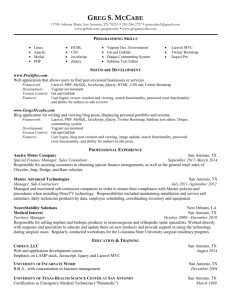
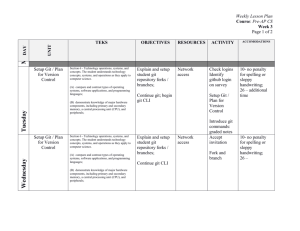
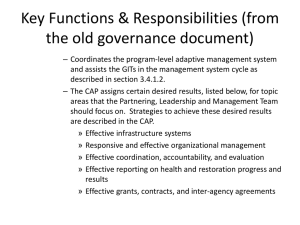
![[#MODULES-1201] spec helper cannot check out git branches](http://s3.studylib.net/store/data/008555300_1-880f0225968435214e13ca807252de3e-300x300.png)
